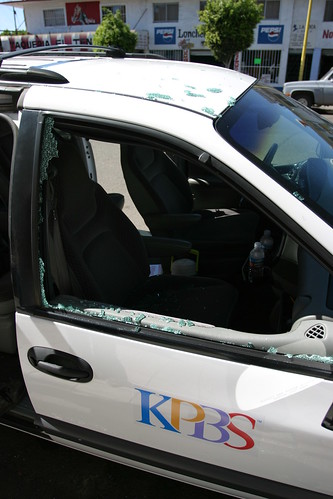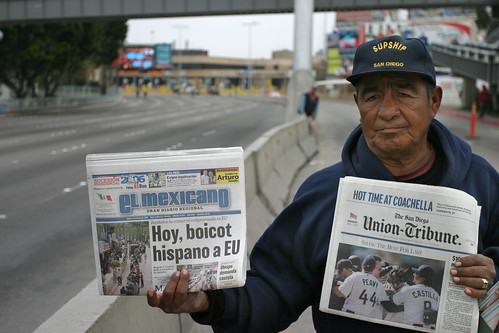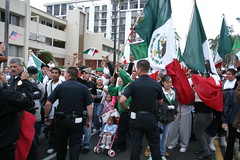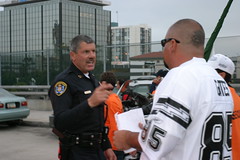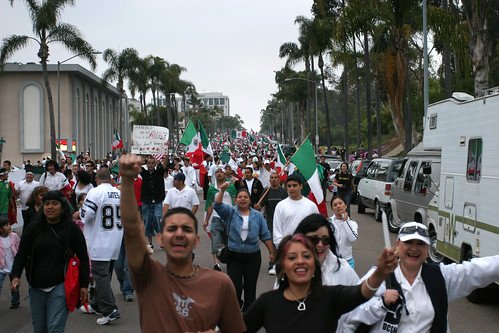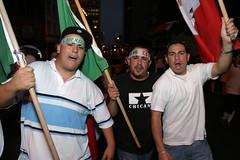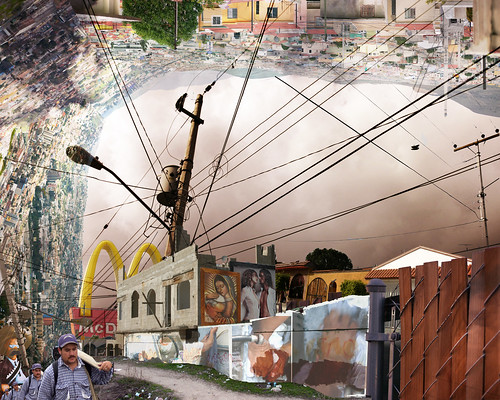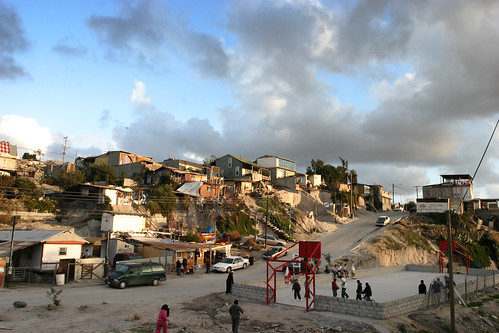Today was a different sort of workday. I was asked by the KPBS television program Full Focus to be an interpreter for several interviews with HIV/AIDS patients in San Ysidro, CA. I wasn’t quite sure I was up for the task – this having no reflection on working with HIV/AIDS patients, but more about whether or not my Spanish skills were up to professional standards. I let them know I wasn’t particularly knowledgeable in medical Spanish jargon, but they weren’t worried.
We went down to a free clinic that treats both physical and psychological impact of VIH/SIDA (Virus de la Inmunodeficiencia Humana / SÃndrome de InmunoDeficiencia Adquirida) on local residents who have HIV or AIDS. We interviewed a woman who discovered she was both HIV positive and pregnant in the same blood test. A man confessed he had gotten HIV from a homosexual encounter but has never told his family. A senior citizen who found out she had AIDS because of her husband’s infidelities, her husband being the only man with whom she has ever had relations. The stories were intense to say the least.
After the visit to the clinic, we headed down to la Coahuila in Tijuana, the red light district. Apparently, some men will pay extra to have unprotected sex. I suppose you have to already be headed down a pretty dark path to actually pay a prostitute extra for unprotected sex… So, we headed for the area so they could shoot some B-roll. I had only driven by once a few years back on a quick tour of the city, so we pulled over at a taqueria nearby to double check on our bearings. The guy behind the counter didn’t seem to appreciate that I was asking him where the prostitutes were. He also denied my request to park in front of his shop. He whipped his sarcastic hand in the direction of a dirt lot and told me to park there, but to make sure and tip the guy extra to watch our stuff. His flippant attitude didn’t inspire me to take them up on the offer. We parked across the street, and walked several blocks to find some action.
We found a nice spot where both sides of the street had girls dressed in varying degrees of hoochiness. But as soon as the camera came out, they all disappeared. A guy approached us and began telling us in broken English that Tijuana is a wonderful place, that there are much better things to be filming. He passionately tried to dissuade us from shooting scenes that perpetuate the worst image possible of Tijuana. A passing car honked and flipped us the bird.
Only a block away from returning to the van, someone approached and told me our window had been broken and that the police were all around our vehicle. I ran back and sure enough it was true. The passenger window was shattered, and several pieces of equipment were stolen. A drunk man standing nearby pointed to a group of people and told me they were accomplices, that they knew who did it. The police questioned those in the area, but conveniently enough, “no one saw anything”. We were even parked beneath a surveillance camera, but I can imagine petty crime doesn’t always get a lot of investigative attention. How can you break into a car, in broad daylight, with 15 people on the same sidewalk, run off with lighting equipment, and no one sees anything. I couldn’t help think that everyone watching was all part of a Coahuila mafia.
In the end, it was a disappointing day for an optimist like me. The unfortunate yet all too common conclusion: the actions of punk criminals squelch the voice of the honest masses who are tired of the corruption.
